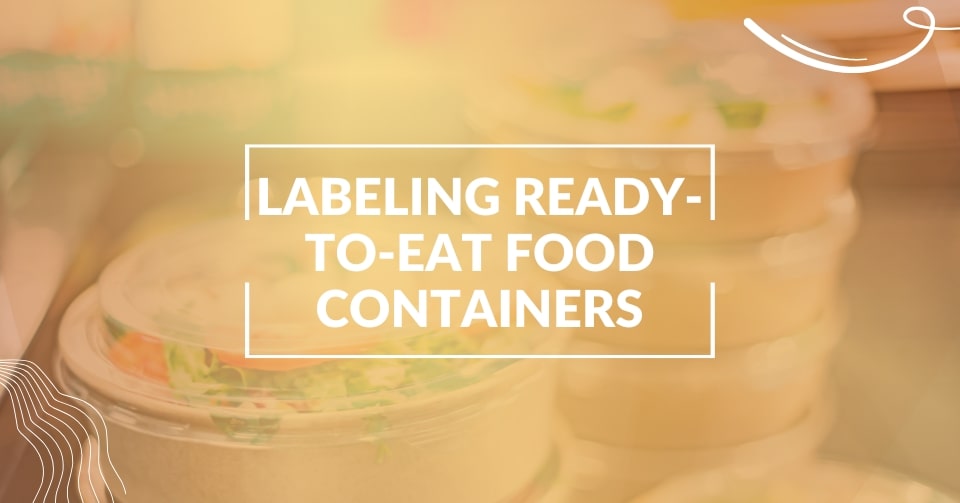Maintaining quality, safety, and compliance is crucial in the food and beverage manufacturing industry. Despite best efforts, problems such as product defects, safety issues, or noncompliance events can still occur. When they do, it’s essential to address them promptly and effectively. This is where Root Cause Analysis (RCA) and Corrective and Preventive Action (CAPA) come into play.
RCA helps identify the underlying cause of a problem, while CAPA provides a structured approach to address it and prevent recurrence. This guide explores the importance of RCA in the CAPA process and how food and beverage manufacturers can leverage these tools to maintain high standards.
What Is Root Cause Analysis (RCA)?
Root Cause Analysis (RCA) is a systematic method for identifying the root causes of problems or incidents rather than simply addressing the symptoms. Identifying the root cause of a problem is the first step in handling production and safety issues. RCA addresses product quality, food safety, regulatory compliance, and operational inefficiencies in the food and beverage industry.
5 Key Steps in Root Cause Analysis
- Problem Identification: Clearly define the problem or incident that occurred.
- Data Collection: Gather relevant data, including observations, records, and any evidence related to the problem.
- Cause Analysis: Use RCA tools to identify potential causes of the problem. Common tools include the Fishbone Diagram, 5 Whys, and Fault Tree Analysis.
- Root Cause Identification: Pinpoint the primary cause(s) of the problem based on the analysis.
- Recommendation: Propose corrective actions to address the root cause and prevent future occurrences.
Understanding CAPA: Corrective and Preventive Actions
Corrective and Preventive Action (CAPA) is a problem-solving approach widely used in industries, especially food and beverage manufacturing. CAPA consists of two key components:
- Corrective Action: Actions taken to eliminate the root cause of a detected non-conformity or other undesirable situation.
- Preventive Action: Actions taken to eliminate the root cause of a potential non-conformity or other undesirable potential situations before they occur.
CAPA is not just about fixing immediate issues; it’s about making lasting improvements that ensure similar problems do not recur, enhancing overall product quality and safety.
How RCA Informs CAPA in Food and Beverage Manufacturing
RCA and CAPA are closely interconnected. RCA informs CAPA by identifying the root causes of problems, which then guides the development of corrective and preventive actions.
Here’s how RCA directly contributes to CAPA:
1. Accurate Problem Identification and Definition
RCA ensures that the exact nature of the problem is understood, which is the foundation of an effective CAPA process. For example, suppose a batch of food products is contaminated. Root cause analysis helps identify whether the issue arose due to equipment malfunction, supplier issues, or a breakdown in process controls.
2. Prioritizing Issues Based on Impact
RCA helps prioritize issues by identifying which problems pose the highest risk to product quality, safety, and compliance. This prioritization enables food manufacturers to focus their CAPA efforts on the most critical areas, ensuring resources are used effectively.
3. Developing Targeted Corrective Actions
RCA provides specific insights into what needs to be corrected. Instead of implementing broad, generic fixes, manufacturers can develop targeted corrective actions that directly address the identified root cause.
For instance, if RCA reveals that inadequate staff training led to incorrect handling of allergens, the corrective action could be to enhance training programs.
4. Preventive Measures Based on Root Cause Insights
Beyond corrective actions, RCA informs preventive actions by highlighting potential process weaknesses that could lead to future issues. For example, if a root cause is traced to supplier inconsistencies, preventive measures might include more rigorous supplier audits or adjustments to quality control protocols.
5. Monitoring and Verifying Effectiveness
RCA also plays a role in CAPA’s ongoing monitoring and verification phases. After implementing corrective and preventive actions, RCA techniques can be used to assess whether the actions have effectively mitigated the identified root causes and whether new risks have been introduced.
Key Tools for Conducting Root Cause Analysis
Several RCA tools are commonly used in the food and beverage industry to identify the root causes of problems:
1. Fishbone Diagram (Ishikawa Diagram)
The Fishbone Diagram helps identify potential causes of a problem by categorizing them into major factors such as People, Methods, Machines, Materials, Measurement, and Environment. This visual tool helps teams brainstorm and organize possible root causes systematically.
2. 5 Whys Technique
The 5 Whys is a simple yet powerful tool that involves asking “why” multiple times (usually five) until the root cause of the problem is identified. This method is effective for drilling down into the cause-and-effect relationships underlying a problem.
3. Fault Tree Analysis (FTA)
Fault Tree Analysis is a top-down, deductive approach used to analyze the causes of system failures. It uses logic diagrams to visually map out the various pathways that could lead to a specific undesirable event.
4. Pareto Analysis
Pareto Analysis helps prioritize potential causes based on their impact, using the 80/20 rule—80% of problems are often due to 20% of causes. This approach allows manufacturers to focus on the most significant issues.
Benefits of RCA and CAPA in Food and Beverage Manufacturing
- Enhanced Product Quality: By identifying and addressing root causes, manufacturers can prevent defects and ensure consistent product quality.
- Improved Food Safety: RCA and CAPA help mitigate food safety risks, ensuring that products meet regulatory requirements and are safe for consumers.
- Cost Reduction: Eliminating recurring problems reduces costs associated with waste, rework, recalls, and non-compliance penalties.
- Regulatory Compliance: CAPA is a critical component of food safety management systems such as ISO 22000, HACCP, and FSMA, helping businesses maintain compliance with industry regulations.
- Increased Customer Satisfaction: Proactively addressing quality and safety issues enhances customer trust and satisfaction, leading to a better market reputation.
How To Implement an Effective RCA and CAPA Process
To successfully implement a solid Root Cause Analysis (RCA) and Corrective and Preventive Action (CAPA) process, you need to take a structured and methodical approach. Here are some essential steps to help make sure your system is not only compliant but also focused on delivering real results.
- Establish a Cross-Functional Team: Involve team members from different departments, including quality, production, maintenance, and supply chain, to provide diverse perspectives on the problem.
- Document the Process: Keep detailed records of RCA and CAPA activities, including findings, actions taken, and results. Documentation is essential for audits and continuous improvement.
- Use Software Tools: Consider implementing CAPA management software that integrates Root Cause Analysis (RCA) and Corrective and Preventive Action (CAPA) features into a single platform. These tools help organizations streamline issue resolution workflows, maintain thorough documentation, and ensure compliance with industry standards such as FDA, ISO, or GFSI. With a digital solution, teams can more efficiently identify root causes, implement corrective actions, and track the effectiveness of their improvements over time.
- Monitor and Review: Continuously monitor the effectiveness of corrective and preventive actions. Review the process regularly to identify opportunities for improvement.
Conclusion
Root Cause Analysis and CAPA are indispensable tools for food and beverage manufacturers committed to maintaining high standards of quality and safety. By effectively identifying and addressing the root causes of problems, manufacturers can prevent future occurrences, reduce costs, and enhance compliance with regulatory requirements.
Implementing a robust RCA and CAPA process is not just about fixing problems—it’s about building a culture of continuous improvement that benefits both the business and its customers.
FAQs
RCA aims to identify the underlying causes of problems or incidents, providing a foundation for developing effective corrective and preventive actions in the CAPA process.
RCA helps identify the root causes of food safety issues, such as contamination or equipment failure, enabling manufacturers to implement targeted corrective actions that address these risks.
Common RCA tools include the Fishbone Diagram, 5 Whys, Fault Tree Analysis, and Pareto Analysis. Each provides a structured approach to identifying the root causes of problems.
CAPA and RCA are critical components of food safety management systems required by standards such as ISO 22000 and HACCP, helping businesses comply with food safety regulations.
FoodReady food safety software integrates RCA and CAPA management, providing templates, documentation tools, and tracking features to streamline the process and ensure compliance.
If the root cause is not correctly identified, corrective actions may fail to address the real issue, leading to recurring problems and potential safety risks.
RCA and CAPA should be reviewed regularly, especially after incidents or process changes, to ensure the effectiveness of implemented actions and continuous improvement.








